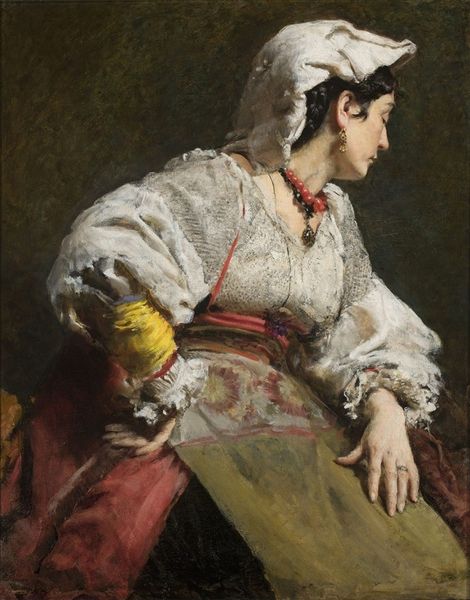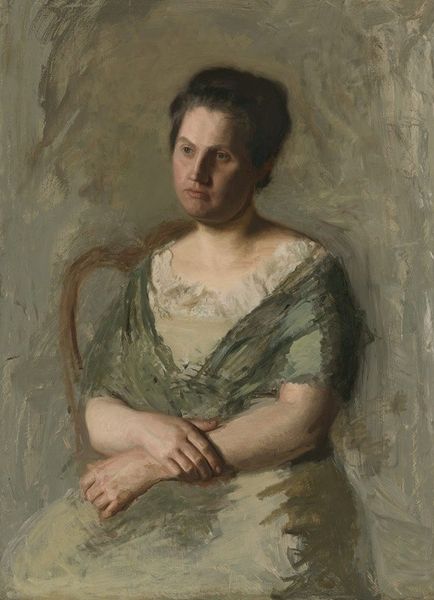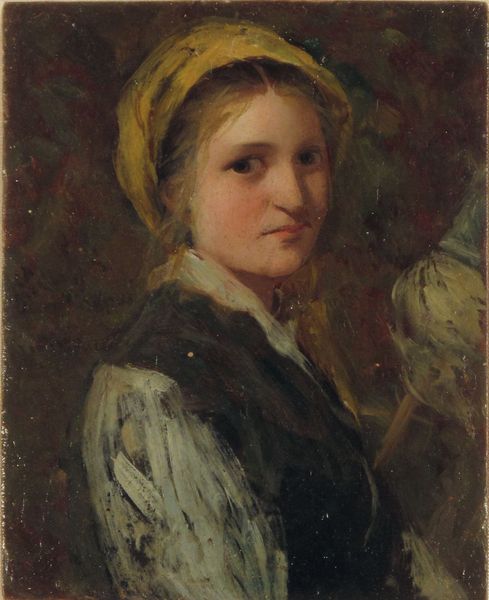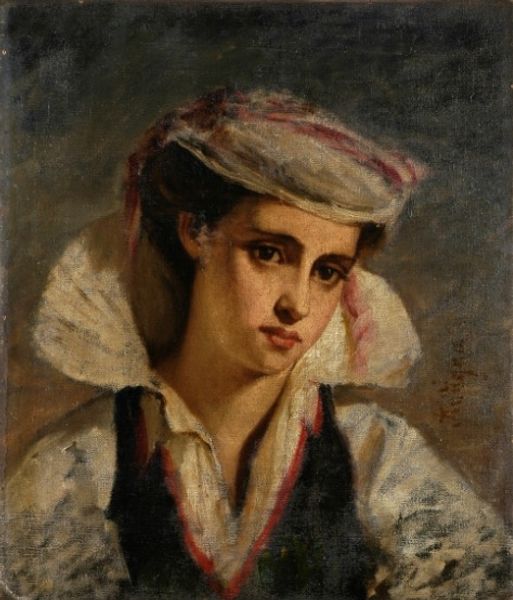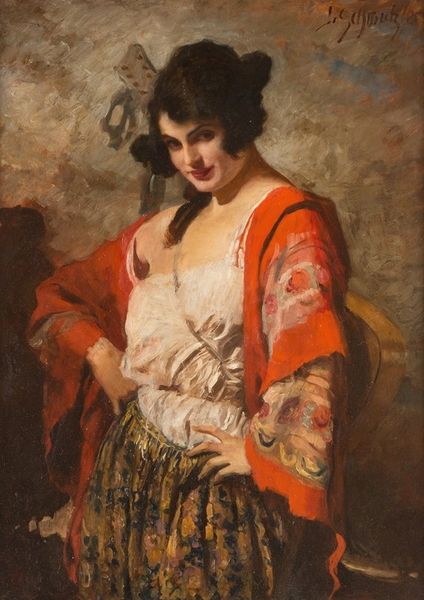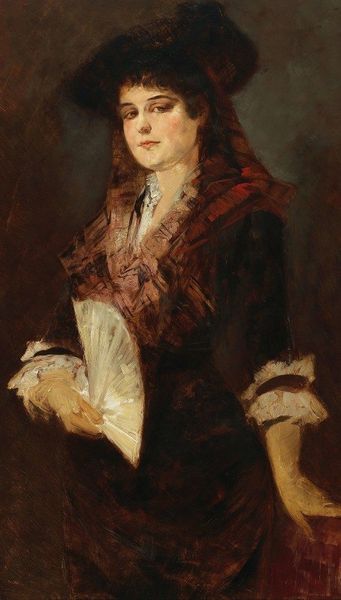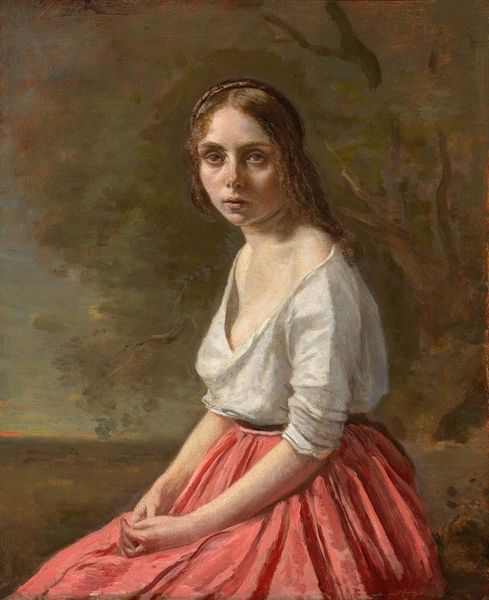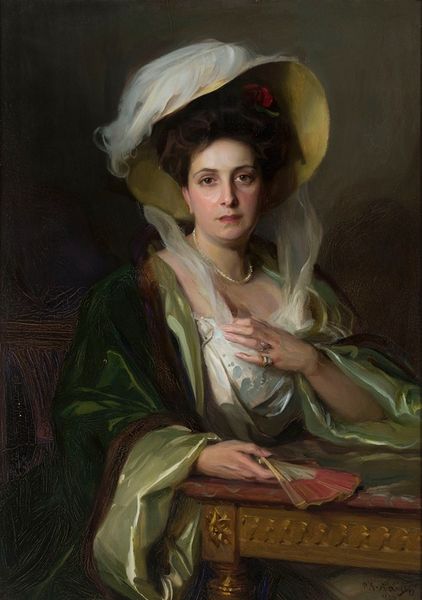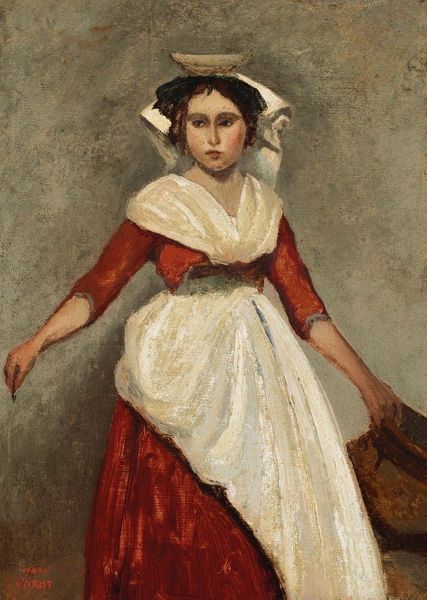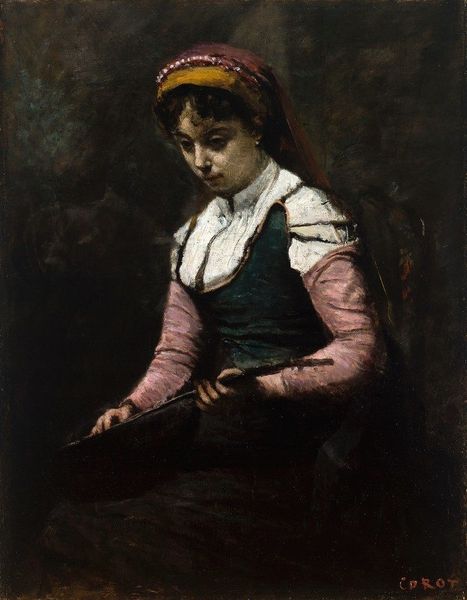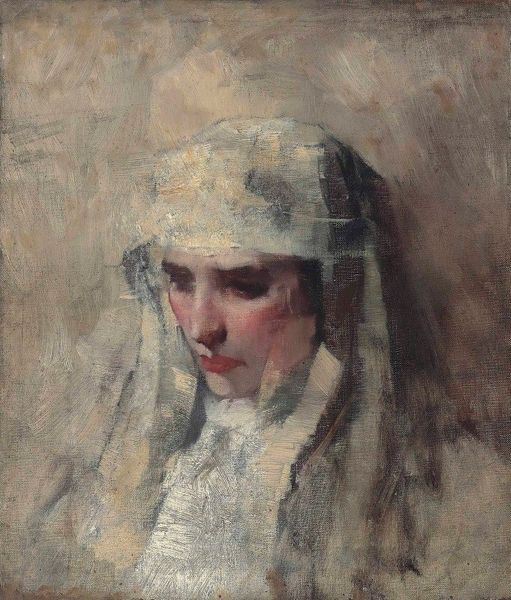
Copyright: Public Domain: Artvee
Camille Corot created this oil painting, called "Sibylle", some time in the mid-19th century. Here, Corot’s female subject presents herself as a figure of classical antiquity. Her laurel wreath suggests the ancient world, while her direct gaze projects an air of self-possession. The rise of history painting in France was very much tied to the rise of museums. The Louvre, particularly, served as a source of knowledge and inspiration for artists who wished to depict scenes from history, mythology, and literature. The references in Corot’s “Sibylle” may be to those artistic institutions. Of course, what we see in the work is equally a product of the social conditions of 19th-century France. As art historians, we might look to other paintings by Corot and his contemporaries, or to literature and other cultural products of the time, to help us better understand the image’s context. In the end, we come to understand art as something firmly rooted in its social and institutional moment.
Comments
No comments
Be the first to comment and join the conversation on the ultimate creative platform.
